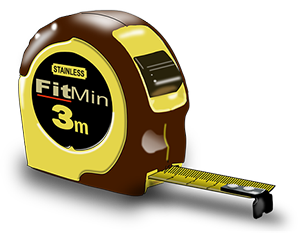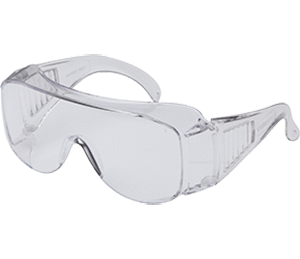Setting Up A Tinkering Space
What is Tinkering?
Tinkering is the first step in the Experiential Learning continuum. Experiential Learning is the process of learning through experience but can be more specifically defined as "learning through reflection on doing". ... Beginning in the 1970s, David A. Kolb helped to develop the modern theory of experiential learning, drawing heavily on the work of John Dewey, Kurt Lewin, and Jean Piaget.
Tinkering is a hands-on experience where children are given time to explore and invent. It involves experimenting with authentic tools to help a child understand how things work. Tinkering definitely supports learning through doing and teaches children valuable lessons by helping them develop fine motor skills, problem solving abilities and peer relationships.
Through Tinkering, the children will be engaged in open-ended experiences that allow them to question, design, collaborate, and construct knowledge as they go. Tinkering promotes deep engagement in scientific and engineering practices. It also gives the learner an opportunity to take part in multiple cycles of design and discovery.
Why You Need Tinkering in Your Classroom
When children tinker, they will develop a trial and error-based process where persistence and resourcefulness are developed and rewarded. Their critical and creative thinking are nurtured through their explorations in the Tinkering space.
Tinkering activities also build peer relationships in the children. The social environment supports teamwork and collaboration as the children observe, inquire and innovate together.
Student-driven purposeful problem-solving skills are supported through Tinkering. These skills benefit children by developing their confidence and stimulating their creativity.
“The long-term benefits of tinkering time are remarkable,” said Katy Scott, Education Technology Specialist at the Monterey Bay Aquarium in California. “In many ways, tinkering resembles inquiry-based learning, cooperative learning, and project-based learning, all of which have been proven to have long-term positive effects on student achievement and success.”
Several studies in the science of learning have shown that hands-on experimentation through trial and error, helps children conceptualize ideas and enhances their understanding on how things work in much greater depth. By providing problem solving practice at a Tinkering space during investigation time, children are equipped with lifelong skills that can be used in all areas of learning.
What You Need in a Classroom Tinkering Area
First you will need to dedicate a space with a strong worktable or bench. To make this space conducive to social interactions, I recommend a table that seats 2 children comfortably. Authentic tools are very important. We started our Tinkering space with two sets of safety glasses, a set of screwdrivers, a tape measure and a couple of small piers. You will need to think about how to store the tools so that the area stays tidy and workable. We have a small tray for the pliers and tape measure. The screwdrivers are in a pencil container and the safety glasses stay on the worktable.
We have clipboards and pencils at every investigation area. This encourages the children to record their learning and allows them to practice their literacy skills in real-life situations. For that reason, we also include relevant texts and environmental print for the children to read and research.
You can download a sample of my Tinkering Display Pack here in my Free Resource Library.
It contains an information poster for parents and educators, a couple of safety glasses signs and 2 Tinkering word clouds.
These will help to inform others about the benefits of Tinkering and will also get you started with some environmental print.
Of course, you will also need to provide something for the children to pull apart or deconstruct. Anything that requires power OR has a movement mechanism are ideal Tinkering items. If you are using an electrical item, remove the cord before adding it to the area.
Old and broken laptops, computers, sewing machines, video & CD players, phones, fans, clocks, microwaves, toasters and other kitchen appliances, heaters, fans, bikes, push & pull toys, battery operated toys… the list of items is endless!
At times, we have offered small construction sets like meccano or a variety of nuts & bolts, chains, locks with keys, and metal plates & brackets etc.
We always keep the bits and pieces and all the parts the children remove. They are stored in small tub at the Tinkering table. Sometimes the children will try to re-assemble a piece and sometimes children source parts from the tub for their box constructions and projects at the Maker’s Space/ Art Area. These creative projects make great displays in the Tinkering area too!
Make Your Tinkering Space Inviting
It’s very important for me to work in a visually appealing and peaceful environment and I know that most children appreciate this as well. A well designed, beautiful space draws a child in and often invites others that may not have otherwise visited that space.
I have found the children are much more respectful of the materials if they are authentic and have been placed in an area with care and intention. Offering real-life tools implies you trust the children to use them correctly and children will usually live up to your expectations.
Having an organised area helps keep the children working with intention and on-task. It also ensures a smooth pack up. I do love a tidy classroom. I think we all like to work in a tidy, inviting and well organised space.
I have designed some beautiful printables to help you setup an inviting and educational Tinkering space in your classroom.
My Tinkering Display Pack includes:
· a large Tinkering banner sign
· information poster for parents and educators
· 28 vocab cards illustrated with real life images
· safety glasses signs
· under construction signs
· Tinkering word clouds
· 2 illustrated Tinkering quotes
· 12 Tinkering prompt cards
· Tinkering word clouds
· 2 illustrated Tinkering quotes
· 12 Tinkering prompt cards
Are you ready to give your children a hands-on experience where they can explore and invent? Foster their fine motor skills as they manipulate authentic tools. Give them the opportunity to develop a trial and error-based process where persistence and resourcefulness are rewarded. Critical and creative thinking will be nurtured through their explorations in your Tinkering space.
Your children will be equipped with lifelong skills that can be used in all areas of learning.




















